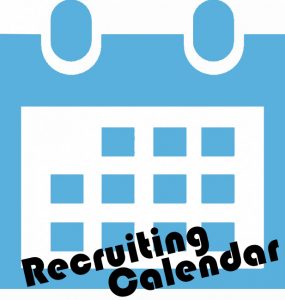To all Players:
This is a general lay-out of the schedule or "time line" that a high school baseball player can follow in an effort to play baseball at the college level. This timeline is affected by the player's skill level changing. Once a player is considered a recruitable athlete by a college school, THE PROCESS SPEEDS UP!
You will continue to hear this thought high school ... If you do not take care of your academics (grades) it will not matter how good you are on the baseball field, if your dream is to play college baseball academics are a part of the package!
Freshman Year
- Settle into the high school environment: get to work developing good classroom and home study habits. Learn to manage your time.
- College coaches may know who a player is because they have seen him play or have been told about him from a coach or other source. Coaches do take notes on players and will begin to follow their progression.
- A player will have to be well above average to get serious looks this early.
- Only a verbal commitment could be made.
Normal:
Get your feet wet by making the high school baseball team. Make sure you are working on your game and strength. Have a plan for summer and fall baseball.
Sophomore Year
- Continue to "hit the books." Keep working hard on those grades.
- Big D1 schools are starting to pay close attention now. Many of them are at least 1 full year ahead on their respective recruiting classes.
- A player will have to be well above average to get serious looks but will be followed more closely if the coach sees potential in them.
- Only a verbal commitment could be made.
- Register with the NCAA Eligibility Center.
Normal:
You are better than last year but still need to improve. Strength is very important at this point. You should consider having a video made and begin to email your targeted list of schools. Choosing camps and showcases where the D1 schools will be is best at this point because they are the most active with sophomores.
If you are not ready to make a skills video (many are not) then do not panic. Work on your skill set and wait until the summer or fall of junior year.
Meet with your school counselor to make sure you are on the right academic track.
Junior Year
- Remember if your dream is to play college baseball, academics are a part of the package!
- This is when the process starts to heat up. D1 coaches may email or call you beginning September 1 of the junior year. D2 coaches may begin June 15 prior to your junior year. You should be emailing coaches your videos and keeping them updated on your progress.
- Coaches send out lots of camp invites to get players on their campus so that their whole staff evaluates the player. The top prospects may make a verbal commitment from summer before junior year and into the fall.
- Towards the end of the junior spring season and early summer is the most common time that D1 schools make the most offers to players. D2/D3/NJCAA/NAIA schools will also begin going after their top players. They will continue to make offers through the fall up to the National Letter of Intent early signing period. The bigger the school, the earlier they tend to sign all their players. For example: after the NLI early signing date, a D1 school may have no spots left or just 1 to 2 available. A D2 school may have 3-6 spots available: some will be full, most will have spots). D3 schools are really ramping up their recruiting efforts now because they will know who is still on the market.
Normal:
Most players are in the thick of it from junior summer to beginning of senior spring baseball. Make a new video if needed and keep contacting coaches regularly. A coach's needs can change quickly.
Senior Year
- If D1 is in your future, you will normally know it half way through your senior year. All other schools will continue to recruit and get players going into the spring season and sometimes into the summer after senior year. The key is understanding that the process never stops until you go to college. Players get drafted, hurt, decide to leave school, become academically ineligible, etc. Which opens up unexpected spots on rosters across the country.
- If you commit after the NLI early signing period in November, you will officially sign in the late signing period in April.
- Send in final transcript to NCAA Eligibility Center so you are eligible to play in college in the fall.
Normal:
Make a verbal commitment between June-October, sign in November or commit after November and sign in April. Anything that happens after April is late in the process but that does not matter. If you want to play college baseball, you have to keep your options open and continue the process all the way to the end.
Want more help?
Call/text 643 Recruit Inc. today at (917)686-3340 or EMAIL US.



